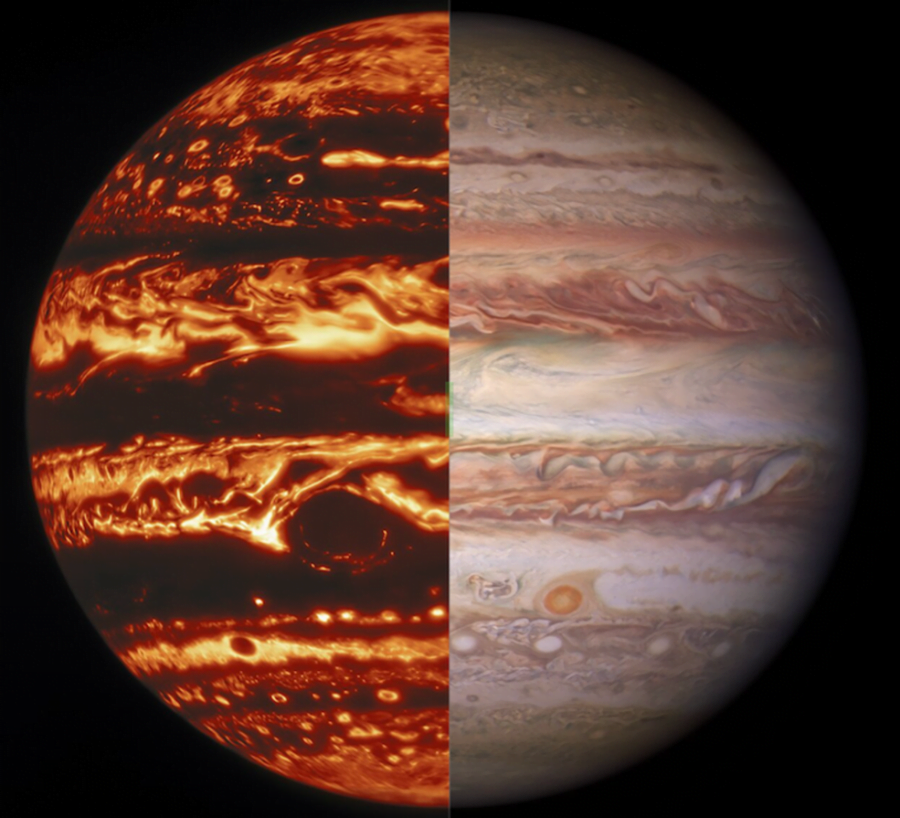Ah Jupiter. The largest planet in our little solar system. A planet with colorful stripes and the famous Great Red Spot: a storm that’s been raging for hundreds of years, a storm truly larger than Earth. All of these swirls and twirls scientists believe to be clouds of ammonia and water floating around in Jupiter’s atmosphere of hydrogen and helium. It could have been a star if only it had grown larger.
NASA launched a space probe named Juno on August 5th of 2011. Among the list of goals for this nifty probe was to analyze Jupiter’s atmosphere, map Jupiter’s magnetic and gravity fields, and to explore various puzzling aspects of the planet. Juno was equipped with a microwave radiometer (MWR) to help the probe examine the various anticyclones, cyclones, and the legendary anticyclone, the Great Red Spot. It found that the cyclones are warmer on the top and colder on the bottom and the opposite for the anticyclones which also rotate in the opposite direction. Both have higher densities at the base and lower densities at the top. Some of these storms exceed 60 miles in height! The Great Red Spot in specific reaches over 200 miles deep! That’s a huge storm!
The MWR also examined Jupiter’s belts and zones, which are the red and white stripes that are a type of cloud. These distinctive bands are made by strong winds that move either east or west, separating the clouds. Juno discovered that the belts and zones transform at around 40 miles underneath the clouds of water. At deeper levels, so underneath the water clouds, Jupiter’s belts are dimmer in microwave light compared to surrounding belts. However, at shallow depths the light is brighter. This phenomenon is similar to Earth’s oceans.
The last aspect of Jupiter Juno examined were the polar cyclones at the planet’s poles. By using the Jovian Infrared Auroral Mapper (JIRAM), scientists were able to determine that the atmospheric phenomena remain stagnant. They stay in the same location because the oscillations of the eight cyclones affect each other so they just stay at an equilibrium around the poles in polygonal arrangements. How cool is that?
To find out more visit the NASA website.
Citations:
“Exploration.” NASA, NASA, 26 June 2019, https://solarsystem.nasa.gov/planets/jupiter/exploration/?page=0&per_page=10&order=launch_date%2Bdesc%2Ctitle%2Basc&search=&tags=Jupiter&category=33.
Greicius, Tony. “Juno Overview.” NASA, NASA, 13 Mar. 2015, Accessed 2 November 2021.
Margetta, Robert. “NASA’s Juno: Science Results Offer First 3D View of Jupiter Atmosphere.” NASA, NASA, 28 Oct. 2021, https://www.nasa.gov/press-release/nasa-s-juno-science-results-offer-first-3d-view-of-jupiter-atmosphere.




